Corcovado National Park is the best place to see wildlife in Costa Rica.
When you consider that Costa Rica is one of the best places in the world for wildlife watching, that’s saying something!
Corcovado is located on the remote Osa Peninsula in southwest Costa Rica. This rugged region was mostly avoided by logging companies, which chopped down much of the virgin rainforest in Central America. Today Corcovado National Park protects the largest remaining tract of primary rainforest along Central America’s Pacific coast.
Not surprisingly, it’s filled with remarkable wildlife.
Corcovado National Park Wildlife
Corcovado is home to 140 mammal species, 370 bird species and over 10,000 insect species. National Geographic once called it “the most biologically intense place on Earth.” Listed below are some of the amazing animals you might see when visiting Corcovado National Park.
Monkey Species in Corcovado
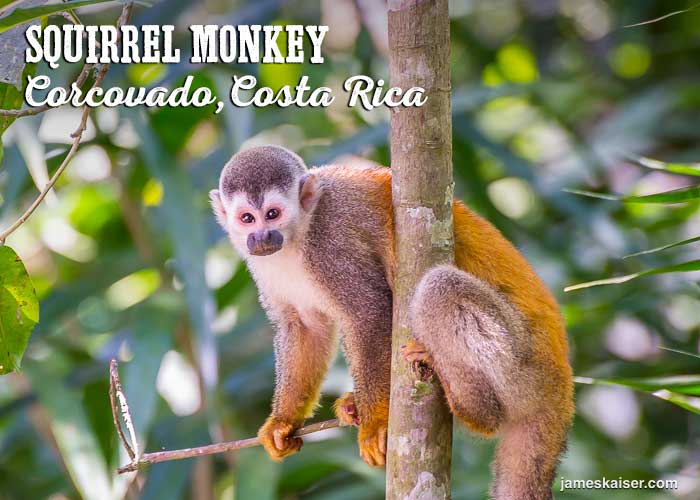
Squirrel Monkey
Squirrel monkeys (Saimiri oerstedii) are the smallest, most endangered monkeys in Costa Rica. Once common in Costa Rica and Panama, most of their former range has been destroyed due to deforestation. It’s estimated that fewer than 3,000 individuals remain. Squirrel monkeys are common in Corcovado, however, where they travel in troops of up to 70 monkeys. Their distinctive call is a series of whistles and chirps.
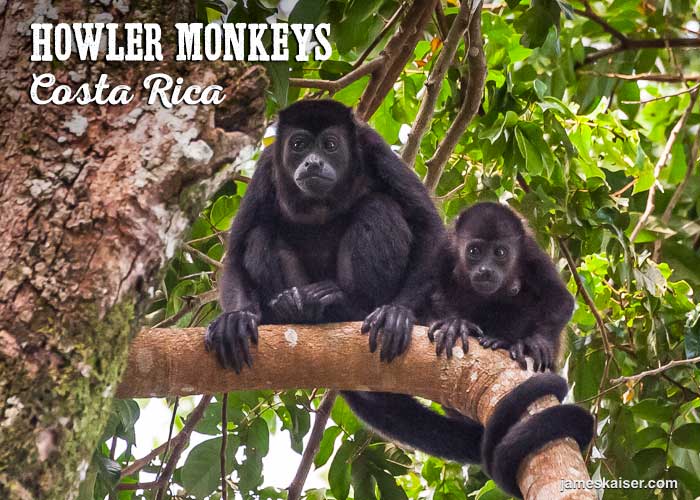
Howler Monkey
The booming roar of the howler monkey (Alouatta palliata) is one of Costa Rica’s most memorable sounds. Lasting four to five seconds, it is audible from several miles away. Despite their powerful roar, however, howler monkeys are notoriously lethargic. They spend most of their time napping on branches. Howler monkeys are the most common monkeys in Costa Rica. They weigh up to 15 pounds (7 kilograms) and live in troops of up to 45 monkeys.

White-Faced Capuchin Monkey
White-faced capuchin monkeys (Cebus capucinus) are the second-most common monkey in Costa Rica. They are named for their resemblance to Italian Capuchin monks, who dressed in dark robes with hoods (capuccios). Although cute, many people consider white-faced capuchins “devils of the rainforest” for their ravenous appetite. Their diet includes everything from flowers to birds to baby coatis. White-faced capuchins have proportionally large brains. They are considered the smartest New World monkey.
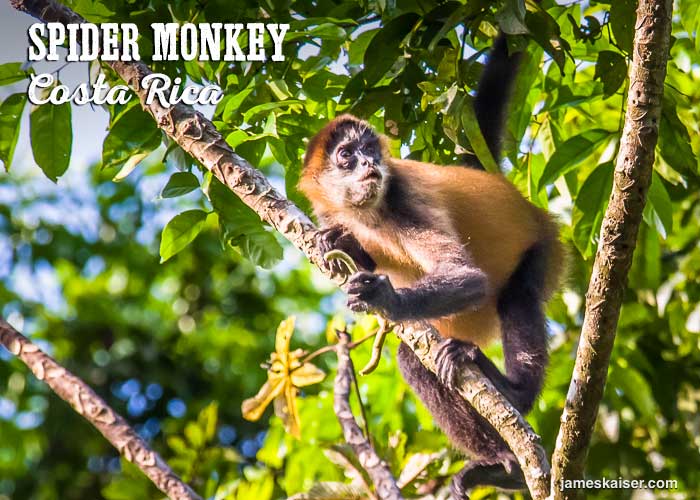
Spider Monkey
Spider monkeys (Ateles geoffroyi) are the largest monkeys in Costa Rica. They grow up to two feet long and weigh up to 20 pounds. Famously dexterous, their arms are 25% longer than their legs (the opposite of most mammals) and their prehensile tail essentially functions as a fifth appendage.
Corcovado National Park Mammals
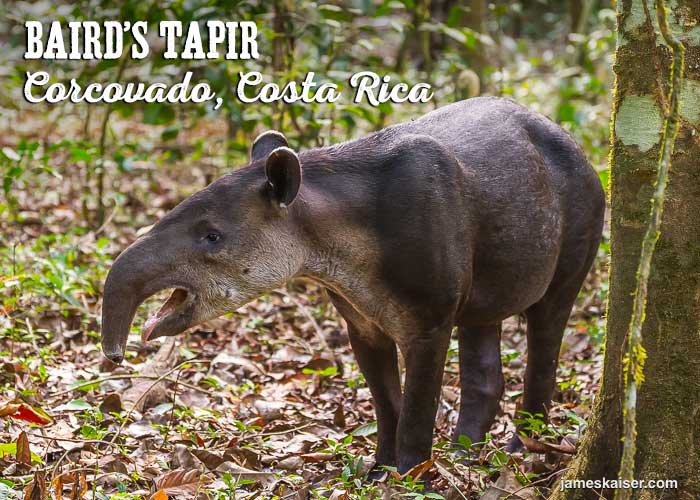
Baird’s Tapir
Baird’s tapir (Tapirus bairdii) is the largest land-dwelling mammal in Central America. They can grow up to 6.5 feet long and weigh up to 880 pounds. Tapirs gather vegetation, their main food source, with a long, flexible snout. Tapirs were once found throughout Costa Rica. Today they only live in a handful of protected areas, including Corcovado National Park.

Northern Tamandua
The Northern Tamandua (Tamandua mexicana) is a species of anteater that ranges from Mexico to South America. As it wanders the forest, the tamandua’s pea-sized mouth ejects a sticky 16-inch tongue that sucks up live ants and termites. Studies suggest tamanduas eat roughly 9,000 insects each day.
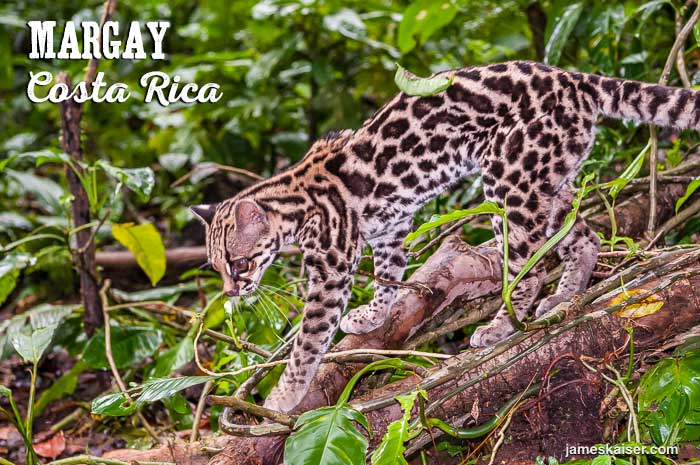
Margay
Weighing roughly 7.7 pounds (3.5 kilograms) the margay (Leopardus wiedii) is one of the smallest cat species in Costa Rica. They spend the vast majority of their lives in trees. Strong claws and flexible ankles make them one of just two cat species that can descend trees head-first.
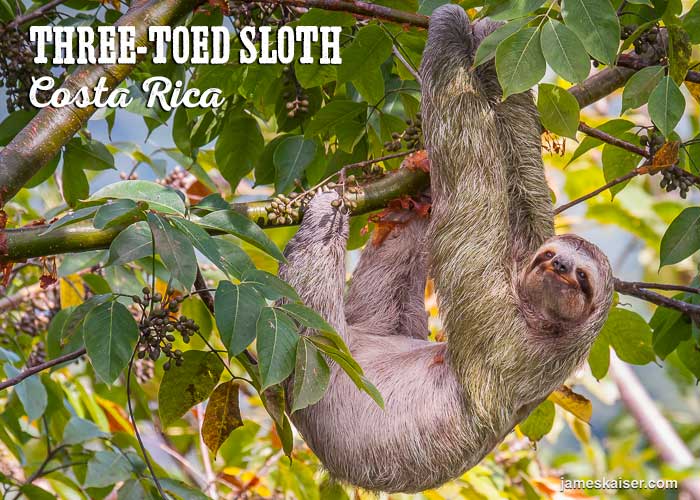
Three-toed sloth
Three-toed sloths (Bradypus variegatus) are one of two sloth species in Costa Rica. Both sloth species are called osos perezosos (“lazy bears”) in Spanish. Sloths have the lowest body temperature of any mammal. Their multi-chambered stomachs can take up to a month to digest leaves, branches and twigs.
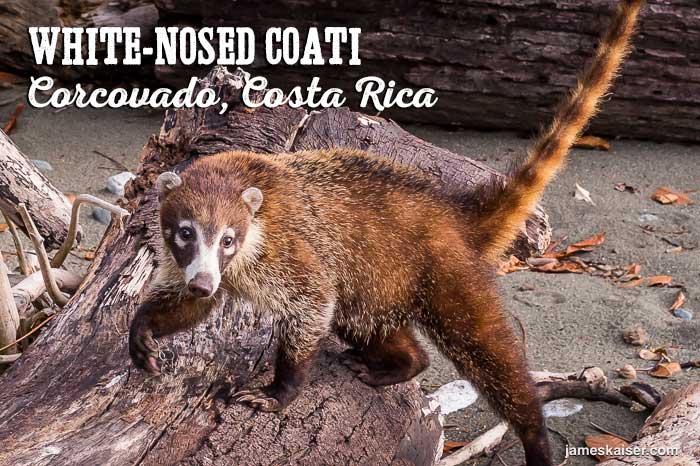
White-Nosed Coati
Called “pizotes” in Costa Rica, white-nosed coatis (Nasua narica) are highly adaptable omnivores. Adult males are generally solitary, while females and young travel in packs of up to 25.
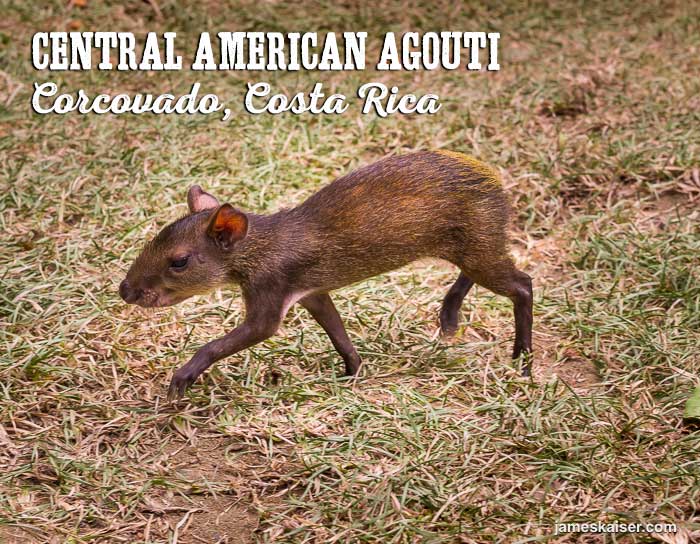
Central American Agouti
The Central American agouti (Dasyprocta punctata) is a small rodent that weights about 6.5 pounds (3 kilograms). Agoutis feed on fruits and seeds. They sometimes follow monkey troops in search of dropped fruit. Males attract females by showering them with urine, sending receptive females into a frenzied dance.
Corcovado National Park Reptiles
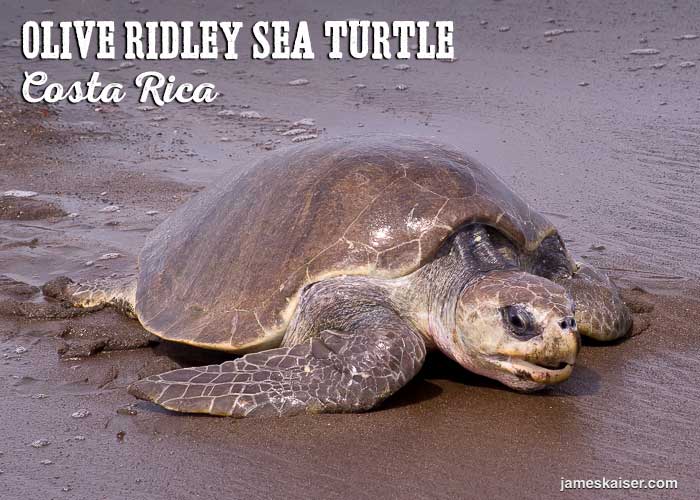
Olive Ridley Sea Turtle
Olive ridley sea turtles (Lepidochelys olivacea) are one of four sea turtle species that lay their eggs in Corcovado’s beaches. Other Corcovado sea turtles include Pacific green (Chelonia mydas), leatherback (Dermochelys coriacea) and hawksbill (Eretmochelys imbricata).

American Crocodile
American Crocodiles (Crocodylus acutus) enjoy lounging in salty rivers close to the ocean, such as the Rio Claro in Corcovado. Males can grow up to 20 feet (6.1 meters) long and weigh up to 2,000 pounds (907 kilograms).